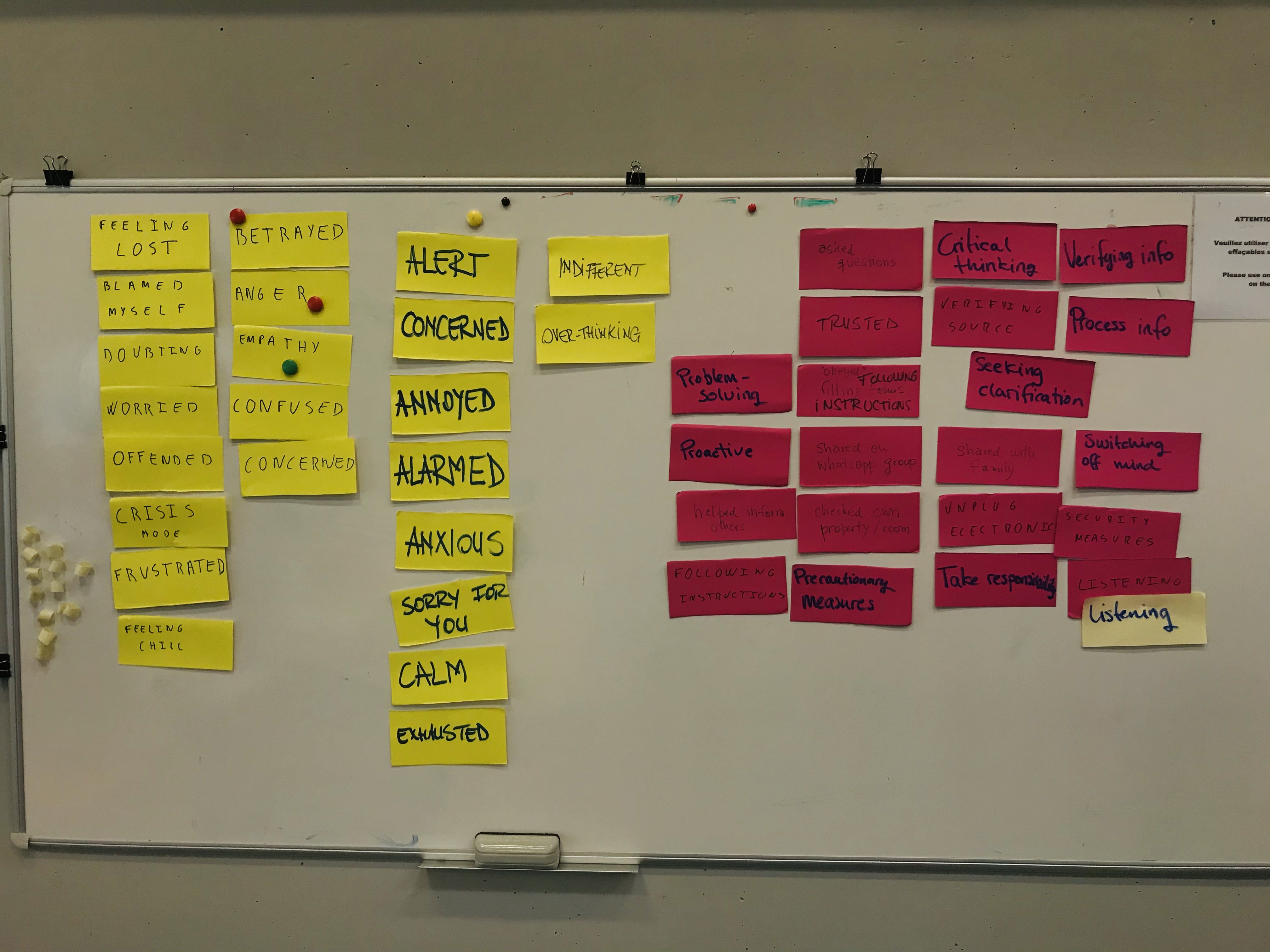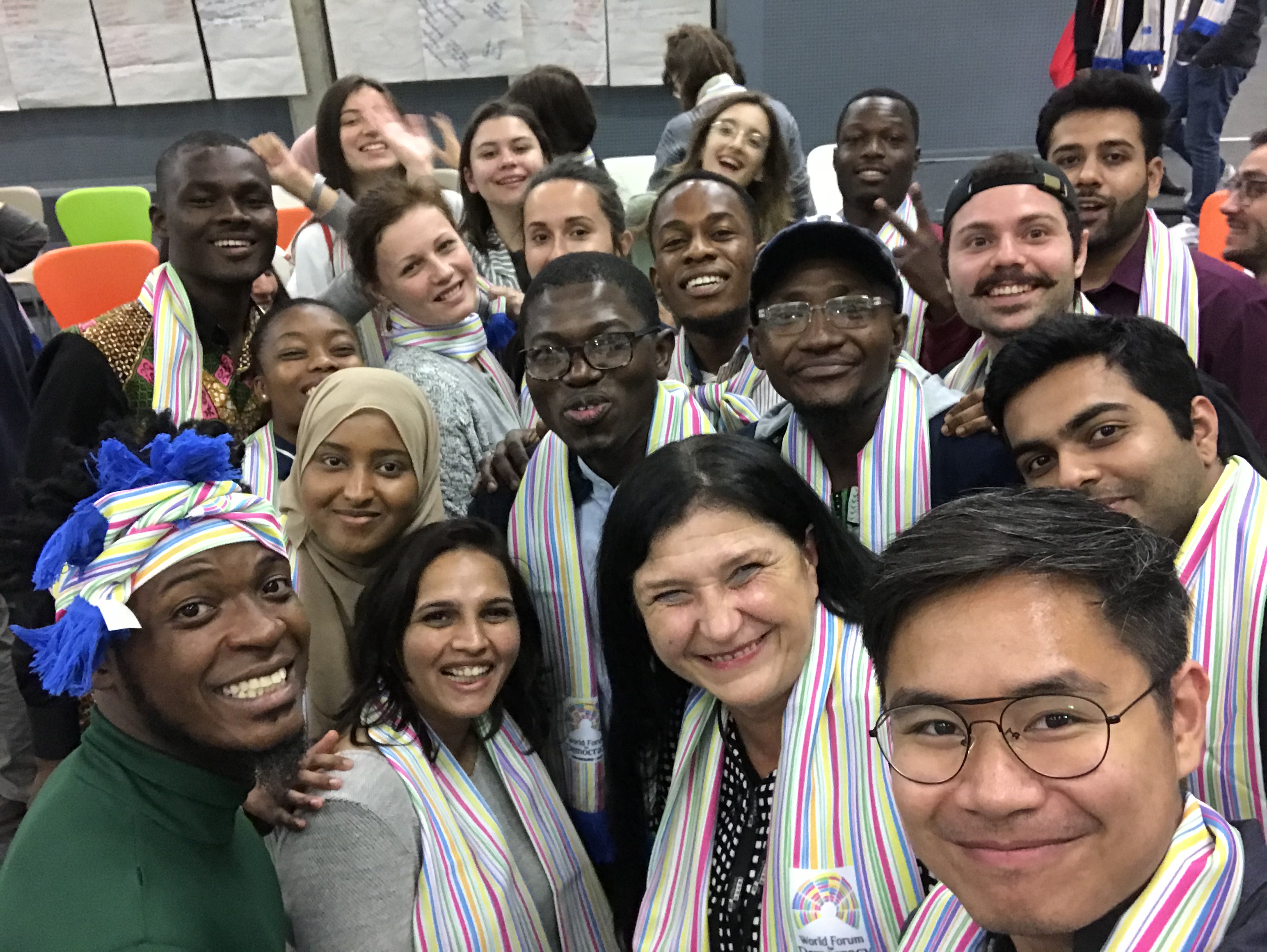If there’s something that disinformation is getting right, it’s engaging people’s emotions. Hasn’t that been the case in the media industry even before the term “fake news” came to our vocabulary?
Emotion and power were the main points of discussion of the two-day preparation of the youth delegates for the World Forum for Democracy 2019. Sixty young people from 46 countries gathered at the European Youth Centre (EYC) in Strasbourg on November 4-5, bringing with them their experiences, stories, and perspectives to provide deeper context into the theme of the WFD this year: Is democracy in danger in the information age?
“The Youth Department (YD) of the Council of Europe runs a programme of activities that contributes to empowering young people to promote youth citizenship, youth mobility, and the values of human rights, democracy and cultural pluralism,” EYC Strasbourg Director Tina Mulcahy said.
“It also provides the opportunity to fund and give educational support for international youth activities aiming to bring together young Europeans and disseminate expertise and knowledge about their life situations, aspirations and ways of expression. In the context of the World Forum for Democracy, the Youth Department invites a delegation of young people from all around the world each year.“
Somehow, the discussion during Day 1 reminded me of the following songs:
In the words of a broken heart
It’s just emotion that’s taken me over
Tied up in sorrow, lost in my soul
– “Emotion” (Bee Gees)
You’ve got me feeling emotions
Deeper than I’ve ever dreamed of
You’ve got me feeling emotions
Higher than the heavens above
– “Emotions” (Mariah Carey)
If you want to sing those tunes with me, then let’s do it. Do those lyrics capture the feeling when you read a comment online that directly relates to your opinion or reality? But what if that comment–or any news perhaps–is different from what you believe in? What do you feel? And how do you react?
The activities during the day centered on identifying emotions, mostly negative, that you experience when you consume today’s media, and the ways that you can turn these emotions as strength.
Here are my highlights of the two days.
Day 1: Building Emotional Competence in the Face of Uncertainties
The Biggest Leak in the History of Leaks
During breakfast, the trainers notified the participants of a “water leak” on the center’s ground floor due to overnight drizzles. The “leak,” according to one of the trainers, “could affect the building’s electricity,” and so we were asked to sign an insurance form. Some of us did, while others continued eating. I saw the puddle just below the staircase and noticed the trainers were confused and concerned. I finished my meal and went back to my room to turn off my power cord (which I felt not doing but still did anyway). I was on an “alert mode” just to be ready.
And then Session 1 began with Camelia Nistor, one of the moderators, asking us questions that sounded as if she was gossiping and blaming someone. That already rang a bell in me that something went awry, but I couldn’t figure it out yet. It took us 41 minutes of sharing observations, interpretations, assumptions, and everything in between before the trainers revealed that the leak incident was indeed real but used it to deliver mixed information and observed our responses. Some of the participants felt “betrayed” and “offended”; others said the trainers “lied.” I felt annoyed not by the trainers but some of the participants who were quick to judge and label people.
The trainers raised a point that in today’s media landscape, “emotional responses are the new resources media is capitalizing on.” There’s a lot of examples out there, and I can say that all of us have been affected by this phenomenon (or reality, if that’s an apt description) in so many ways.
They asked, “How do you build on emotional competence?” When we receive and consume tons of information nowadays, surely there are bits of “fake news” or misleading information or alternate realities that slip through our consciousness, slowly building up that we become numb, feel indifferent, or conscious of our own realities.
There needs a “rational reflection,” as Nistor put it, so we can process information and search for truth and context. But doing “rational reflection” is a challenge in itself because it is mentally demanding and requires a wider perspective, which may be too much for an Average Joe who is dealing with tons of problems, to begin with.

In the subsequent activity, we were tasked to read an editorial piece through a pair of rose-colored glasses and another pair of cool blue shades, representing emotions or rational thinking respectively, and provide our actions related to these states of mind. For someone who has been writing news, I found the exercise challenging because rationalizing every single thought in the text and linking every single rationale to an objective action were just mentally draining. Meanwhile, reading/watching/listening to news and thinking of what it makes us feel was quite easy, because that’s what we usually do.
During the sharing session, I mentioned the idea of “analysis paralysis”, where we become immobilized when we overthink of certainties, facts, or scenarios based on the information we consume or fed to us. Mulcahy, who moderated our group, added that there is no absolute truth; what we can do is to understand and respect the diversity of perspectives, or in her words, “agree to disagree.”

Developing a “brain muscle”
How then can we veer away from the idea that the media is playing around our emotions? Nistor posited that the more we are exposed to fake news and related concepts that evoke our negative emotional responses (see the words in the yellow boxes above), the more we become susceptible and become indifferent that may lead us to question our own realities. But it’s never too late, though.
In a diagram (see below), she showed the relationship between thinking, emotions/sensations, and actions/behaviors. Once we are subjected to stimulants, we begin to think and it triggers a response, which can manifest through emotions or body sensations. If these emotions occur continuously, they become actions or behaviors that can trigger more emotions. The back-and-forth cycle eventually numbs us.
“But we have to power to change the direction of our actions if we choose to,” she reminded the participants. That cycle, for example, can make us feel indifferent or resilient, depending on how you perceive your reality. If you choose to be resilient, you develop a “brain muscle” that helps us control our emotions, or identify the world through different lenses.
In this age of disinformation and fake news, the trainers assert that “critical thinking is a prime competence that is hindered by a lack of emotional resilience.”

Day 2: Finding your Power
Democratic Tug of War
There was no leak during Day 2, but a power struggle. The participants gathered as groups of 6, staying in 10 sections that represent various spheres of democracy. The groups then placed their sections in intersections of a network of ropes. The challenge was to take a step if a prompt, a scenario based on democratic issues or challenges, affects them directly or indirectly.


The resulting movements resembled a “tug of war”, with some sections such as Elections/Voting Rights and Rule of Law/Human Rights pulling the ropes, while others like Culture/Norms and Civil Society/Participation getting dragged in. In one prompt, the ties connecting Human Rights and Governance even broke by the forces from across the network.
The next session, led by trainer Celina del Felice, tapped into our creativity to help us discover, define, and develop our powers to make a change in our communities. Each participant was tasked to look at their projects or careers and visualize their impact using Gaventa’s Power Cube. This framework examines the levels (local to global), spaces (closed to created), and forms (visible to invisible) of power.
While some participants resorted to decorating their cubes to represent the impact of their projects, others took it to a higher level and transformed their cubes into boxes that contain messages and actions which multiplied the significance of their initiatives. At the end of the activity, we set up a “Tower of Power” from our creative cubes.


Francisco Carvalho from Portugal said the activities during the two days helped set the tone for the main World Forum for Democracy at Palais d’Europe, adding that they “served as a mental warm-up for thinking about the topic for the Forum.”
On the other hand, Raina Bhattacharya from India said the sessions prompted the participants to dig deeper into the issues which will be addressed at the World Forum for Democracy. “It has led us to address doubts and issues by discussing extensively with our trainers and co-delegates, making us sensitive towards different perspectives differing along cultures and experiences, and consider issues in a wholesome and inclusive way.”
The EYC organized the intensive activities to help youth delegates get to know each other, develop their ideas about the topic of the WFD, and plan their approach and actions to take during the three days of the WFD.
“After these sessions, the youth delegation goes to the WFD as a dynamic, well-prepared, and well-informed group of individuals who contribute actively to the different labs and plenary sessions. It also allows new networks of global activists to be created and to follow-through with common projects after the WFD,” Mulcahy said.
We wrapped up the preparations with an informal session with Antje Rothemund, Head of the Youth Department of the Council of Europe. She showed a custom-made shawl that will make us visible among the anticipated 1,600 attendees of the main forum.
Rothemund called her meet-up with us a “nice appointment” and reminded everyone of why we were selected to be youth delegates.
“You are here because you are young. Your experience of being young in a world of information that is needed in the forum.”

Photos: Andy Penafuerte III
Pingback:A Passport to Adventures: The Journeys That Defined My Decade - coolkidandy
Pingback:2020 Vision: Focus on What Matters - coolkidandy
Pingback:#AtoZChallenge - Pandemic Journal: Exercising Emotional Competence During the Outbreak - coolkidandy